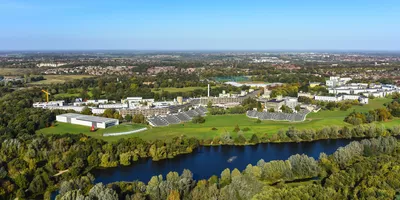Amazon turtle populations recovering well thanks to local action
By: News Archive

The historically over-exploited Giant South American Turtle is making a significant comeback on river beaches in the Brazilian Amazon thanks to local protection efforts, say researchers at the University of East Anglia.
And not only have turtle populations benefited from conservation efforts, other co-occurring species have begun to thrive once again on the protected beaches and in surrounding areas.
The UEA team, working in partnership with Universidade Federal de Alagoas, Anglia Ruskin University and Universidade Federal do Amazonas, analysed data collected on Giant Turtle populations nesting on protected beaches along the Juruá, a major tributary of the Amazon river, over the past four decades.
They also surveyed both locally protected and unprotected beaches along a 1,000-km meandering section of the same river. The survey covered nests of all turtle species as well as bird, iguana, caiman, large fish, river dolphin and insect populations on either the river beaches or the adjacent river channel during the dry season.
Their results, published in Nature Sustainability, show that Giant Turtle populations are well on their way to full recovery on beaches guarded by local vigilantes. There are now over nine times more turtles hatching on these beaches than there were in 1977, equivalent to an annual increase of over 70,000 hatchlings.
The beach survey showed that, of over 2000 turtle nests monitored on protected beaches, only two per cent were attacked by poachers. In contrast, on unprotected beaches, poachers had harvested eggs from 99 per cent of the 202 nests surveyed.
Other species also had much larger populations on protected beaches, compared to beaches with no protection. Species benefiting from the conservation programme included migratory birds, such as the Black Skimmer, the Large-Billed Tern and the Sand-Coloured Nighthawk, as well as the Black Caiman, River Dolphins, Green Iguana and large catfishes.
Turtles have historically been an over-exploited source of meat and eggs despite the first protection laws banning turtle harvest coming into force in 1967. By the late 1970s, numbers had reached worryingly low levels.
The beach protection programme along the Juruá river is part of the largest community-based conservation programme in the Brazilian Amazon. Beaches are guarded on a shoestring budget by local communities carrying out round-the-clock beach surveillance throughout the five-month turtle breeding season.
Prof Carlos Peres, from UEA’s School of Environmental Sciences and a senior author on the study, said: “This study clearly demonstrates the effectiveness of empowering local management action by stakeholders who have the largest stake and a 24/7 presence at key conservation sites. The beaches protected by local communities represent noisy islands of high biodiversity, surrounded by lifeless unprotected beaches, which are invariably empty and silent.”
The team hopes their evidence will help convince governments that supporting local conservation is critical to successful ecological restoration programmes.
“Relying on a handful of government officials, who are often based in urban centres, to protect five million square-kilometres of Amazonian rivers and forests is at best a losing battle which so far has largely failed,” said Prof Peres.
“We need to trigger and then subsidize powerful ‘win-win’ alliances with local communities to both ensure their welfare and sustain the collective vigilance that can maintain the integrity of the world’s largest tropical wilderness region.”
Dr Joseph Hawes, a collaborator at Anglia Ruskin University, said: “Our research highlights the valuable conservation service currently provided by local communities, not just for turtles but for the wider ecosystem. Recognising the importance of their work shows the potential for effective conservation action, even outside existing formally protected areas.”
Lead author Dr João Campos-Silva, now a postdoctoral researcher at Universidade Federal de Alagoas, Brazil, said: “Currently, six million people in the Brazilian Amazon depend on wild nature. By including local dwellers in conservation practices, we can increase the effectiveness of conservation outcomes and enhance local welfare.
“We found huge differences between the ecological and social outcomes in this program. But there is widespread dissatisfaction voiced by beach guards, who get very little return for what can be dangerous work. This means that many of them are now on the brink of giving up on decades of successful beach protection. Better support for this activity through the development of an independent income stream would ensure the long-term financial viability of this program.”
‘Unintended multi-species co-benefits of an Amazonian community-based conservation program’ is published in the journal Nature Sustainability.
Related Articles

Could ‘digital’ smell training restore your sense of smell?
Researchers at the University of East Anglia (UEA) are launching a ground-breaking project to improve the lives of people affected by smell disorders.
Read more
Nurses worldwide rely on intuition to triage patients
Nurses around the world use intuition to work out how sick a patient is before triaging for treatment according to new research from the University of East Anglia.
Read more
British sex lives revealed in new study
A new study published today shows the number of sexual partners we have changes as we age and there are some surprising results.
Read more